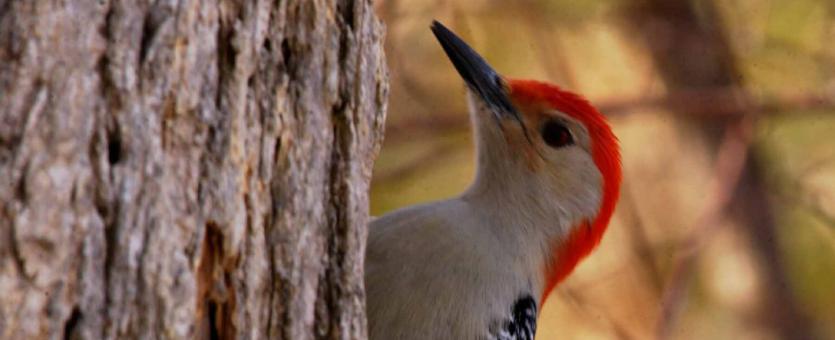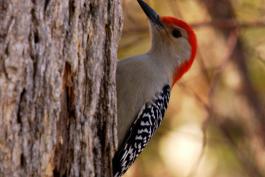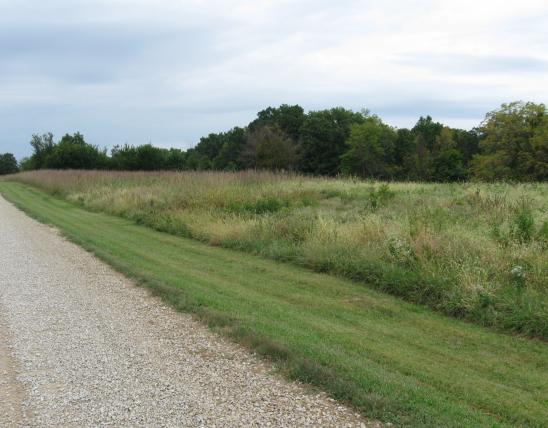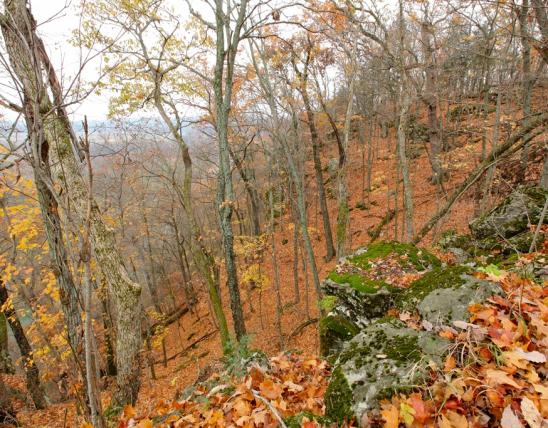Highway 61 divides this area's 148 acres (58 acres to the east and 90 acres to the west). The area consists of approximately 80 percent timbered land and 20 percent open land.

The back and inner half of the wings of the red-bellied woodpecker are banded with narrow black-and-white lines. Outer half of wing is dark with a white crescent at the base of the primaries. Head and underparts are grayish white; the lower belly is reddish, though it is usually not obvious. Male has a wide red band from the bill over the crown to the nape. Female has red on the nape only. Voice is a loud, harsh “churrrrrr,” or a dry, nonmusical “chif-chif.” As with most other woodpeckers, the flight is undulating.
Similar species: The red-headed woodpecker cannot easily be confused with this species except in name. (Most woodpeckers have some amount of red on the head.) The adults of true red-headed woodpeckers have the entire head red, with pure white underparts, rump, and wing patches, and a black (not banded) back.
Length: 9¼ inches (tip of bill to tip of tail).

Statewide. Probably withdraws in winter from some areas.
Habitat and Conservation
A bird of forests, woodlands, parks, and suburban areas, and a frequent visitor to backyard bird feeders. Numbers appear to be stable in this species’ eastern North American range.
Food
Forages in trees for acorns, insects, and fruits, using its strong bill to chip away at bark to expose hiding insects. The tongue is long, barbed, and sticky, and the woodpecker uses it to extract insects from crevices. Frequently visits bird feeders in winter for sunflower seeds and suet.
Status
Common permanent resident.
Life Cycle
Like many other woodpeckers, this species excavates nest holes in the wood of dead or decaying trees or limbs. Clutches comprise 2-6 eggs, which incubate for 12 days. Fledging occurs 24-27 days later. When the woodpeckers are finished with their hole, numerous other species of birds (and other animals) use—even require—such nest holes for their own families. European starlings, however, aggressively evict woodpecker families from their own nests.
Human Connections
Forests are a vital resource for people, for many reasons, and woodpeckers limit the populations of many insects that are injurious to trees. Landowners can help woodpeckers by allowing dead trees to remain standing, providing nesting habitat for woodpeckers.
Ecosystem Connections
Woodpeckers prey on many insects inhabiting and overwintering in the bark of trees, limiting the populations of many species. Many cavity-nesting birds, such as bluebirds, cannot excavate their own holes and thus rely on the presence of woodpeckers for nesting locations.






Where to See Species
About 350 species of birds are likely to be seen in Missouri, though nearly 400 have been recorded within our borders. Most people know a bird when they see one — it has feathers, wings, and a bill. Birds are warm-blooded, and most species can fly. Many migrate hundreds or thousands of miles. Birds lay hard-shelled eggs (often in a nest), and the parents care for the young. Many communicate with songs and calls.
























